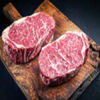The goal of this article is to raise awareness about the importance of the fats we consume when eating meat. Certainly, it's often heard that chicken is leaner than other meats. But is that really true? In the current situation, meat is often purchased on sale or promotion. This means that sometimes, we might not necessarily make a healthy choice.
I will provide you with enlightening information to improve your meat choices and promote a better diet. Of course, there are times when we choose fattier meats, so it's important to balance what we eat throughout the day to keep our lipid levels in check.
I want to clarify that I'm only discussing meats here, not processed meats, terrines, or pâtés. Processed meats are covered in a separate article because it's a very specific topic.
CHICKEN
Boneless breast 1-2%
Boneless thigh 7-8%
Wings 9-10%
Extra-lean ground chicken 2-3%
Lean ground chicken 7-8%
Regular ground chicken 12-15%
Chicken liver 4-5%
As you can see, chicken has very little fat content if we remove the skin. The fat content of chicken is mainly in the skin. However, if we remove the skin but cook the chicken with a lot of additional fat, it doesn't significantly reduce the fat content.
TURKEY
Boneless breast 1-2%
Boneless thigh 8-9%
Extra-lean ground turkey 2-3%
Lean ground turkey 8-10%
Regular ground turkey 12-15%
Turkey liver 3-5%
Turkey and turkey have similar fat content. However, one should be cautious when purchasing. Turkey and turkey are often offered with added butter or fats. Companies know that people associate turkey with being dry, so they take advantage of this prejudice to add unnecessary fats to the poultry. It's best to buy turkey without these additives.
PORK
Pork tenderloin 4-5%
Shoulder and ham 10-15%
Ribs 20-25%
Extra-lean ground pork 4-5%
Lean ground pork 10-12%
Regular ground pork 15-20%
Pork shank 20-30%
Pork liver 4-5%
It's commonly believed that pork is the fattiest meat, but that's absolutely false! Pork is actually a lean meat. Pork diets have been extensively analyzed and studied. Today, pork production offers us pigs with a healthy and relatively low lipid content. Of course, I'm talking about the meat itself, not the fat on the meat. We eat the meat and remove the fat based on the recipes we prepare. Sometimes, we can do this before cooking, and sometimes after.
BEEF
Filet mignon 4-5%
Round 4-6%
Rib steak 15-20%
Extra-lean ground beef 5-7%
Lean ground beef 10-15%
Regular ground beef 15-20%
Beef liver 4-5%
Beef is a widely consumed meat, especially in Canada and Quebec. It has become a staple in culinary habits over the years. Certainly, beef has distinct flavor characteristics that most people enjoy. In terms of fat content, beef is fattier than pork, especially when it comes to ground beef. Ground beef tends to have a higher fat content.
VEAL
Veal cutlet 4-6%
Veal chop 6-10%
Roast veal 8-12%
Veal shank 10-15%
Ground veal 10-20%
Veal liver 3-5%
In popular belief, veal is considered a lean meat. Unfortunately, that's not the case. Veal is a fatty meat, similar to beef, despite being sourced from young calves. Its refined and sought-after taste makes it a meat to be consumed in moderation.
LAMB
Lamb loin 3-6%
Leg of lamb 8-10%
Lamb liver 3-5%
Lamb is generally a fatty meat. Naturally, it's consumed less frequently due to its higher cost. It's advisable to consume lamb occasionally, during special events or celebrations. It's also a good idea to remove excess fat before or after cooking to reduce the lipid content.
OTHER MEATS
Horse fillet 2-3%
Ground horse meat 5-8%
Horse liver 2-3%
Rabbit 3-5%
Goose 25-30%
Duck 30-35%
Based on this information about the fat content of meats, I suggest reducing meat consumption. You can prioritize other sources of protein, which helps to lower fat intake. Remember that the fats in meats are saturated fats, and saturated fats can be harmful to health. So, moderation in consumption is important, especially for those dealing with cholesterol problems, cardiovascular disease, diabetes, obesity, and so on.


